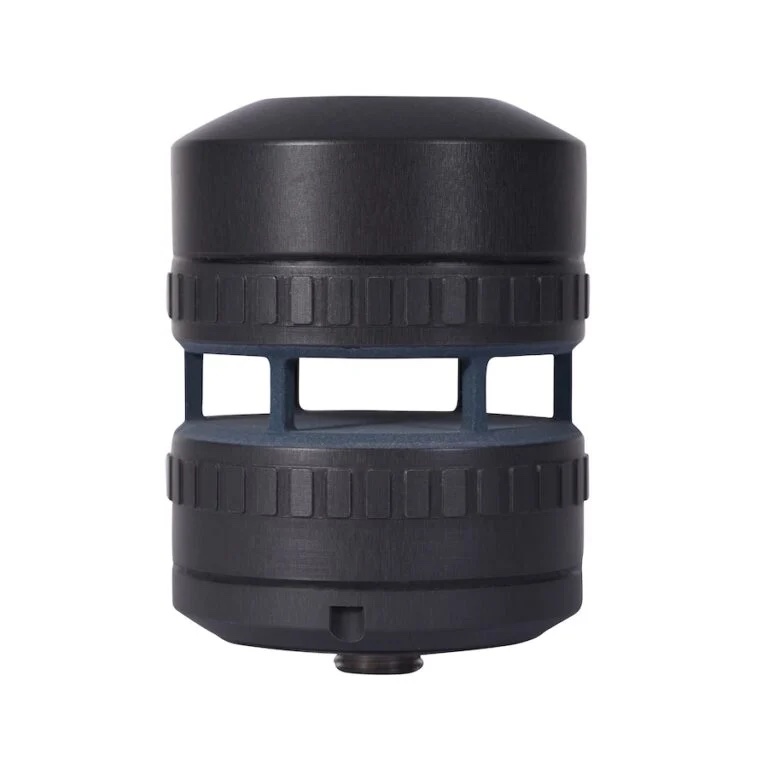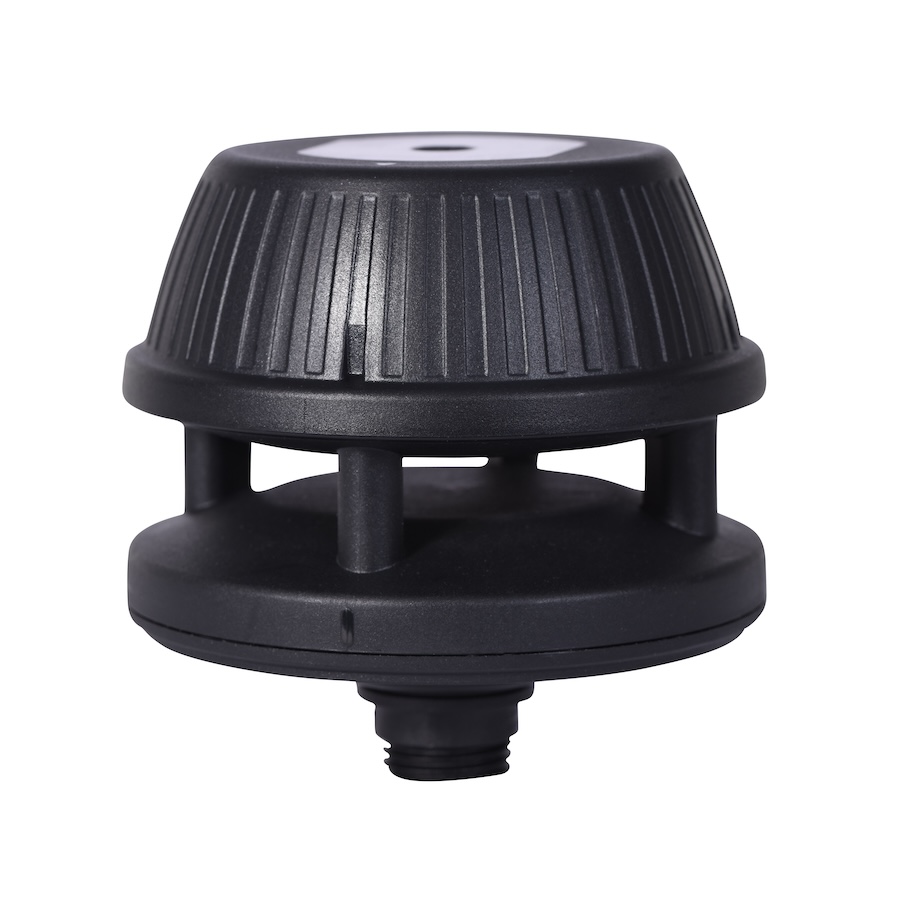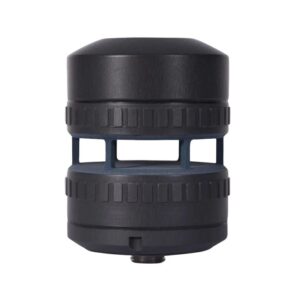Suppliers
Add your company
Rugged Solid-State Ultrasonic Wind Sensors for Marine & Offshore Use
If you design, build or supply Anemometers, create a profile to showcase your capabilities on this page
Products
Anemometers
Anemometers are instruments used to measure wind speed and direction across various marine and environmental contexts. They are employed in offshore weather forecasting, storm tracking, and atmospheric data logging for coastal and oceanographic research. Available in analog, digital, ultrasonic, and hot-wire configurations, modern anemometers are designed for durability and accuracy in challenging marine environments. Common deployment platforms include buoys, vessels, and weather stations, supporting consistent wind monitoring for maritime operations, environmental studies, and regulatory compliance.
What is an Anemometer?
An anemometer is a wind measuring device that quantifies air velocity and, in many models, wind direction. Its core function measures wind speed, often recorded in meters per second or knots. Most anemometers operate using mechanical, ultrasonic, or thermal principles, converting wind energy into electrical signals processed for display or data logging.
Applications of Anemometers in Ocean Science
Anemometers are indispensable in marine environments where accurate wind measurement supports various scientific, operational, and safety functions. These instruments are critical in acquiring meteorological data that influence decisions in oceanography, coastal management, climate modeling, and offshore engineering.
Marine Meteorology and Offshore Weather Monitoring
Anemometers are foundational tools for marine meteorology, enabling the monitoring of wind velocity and direction over oceanic regions. Data collected in real time allows for the forecasting of severe weather, such as tropical storms and cyclones, which is essential for safeguarding maritime operations and coastal infrastructure.
Weather Stations and Meteorological Networks
Anemometers are integrated into terrestrial and marine weather stations as part of broader meteorological networks. They provide continuous wind measurements that support short- and long-term forecasting models, especially in coastal and offshore zones.
Oceanographic Research and Atmospheric Interaction Studies
In ocean science, understanding the interactions between atmospheric and oceanic systems is central. Anemometers provide wind data necessary to model sea-air exchanges, quantify heat and moisture fluxes, and evaluate the effects of wind-driven surface currents. These data are especially critical in oceanographic research campaigns focused on phenomena such as upwelling, wave generation, and coastal erosion.
Support for Oceanographic Instrumentation and Data Fusion
Deployed alongside current meters, wave sensors, and atmospheric pressure devices, anemometers contribute to multi-parameter environmental datasets. This integration enables comprehensive modeling of marine systems and supports the calibration and validation of satellite observations and numerical simulations.
Climate Change Studies and Long-Term Environmental Monitoring
Wind data plays a pivotal role in global climate models. Long-term deployment of anemometers on remote buoys, weather stations, and research vessels facilitates continuous atmospheric monitoring. These datasets support assessments of climate variability, storm frequency, and shifting wind patterns related to global warming and polar changes.
Offshore Engineering and Structural Safety
Anemometers contribute to the structural health monitoring of offshore platforms, wind turbines, and floating infrastructure. Wind speed and direction influence design parameters and are used in dynamic load assessments. Continuous wind measurement is necessary for compliance with engineering safety standards and for scheduling maintenance activities under favorable conditions.
Maritime Navigation and Safety Systems
Anemometers assist in marine navigation by supplying sailors and onboard systems with accurate wind speed and direction information. This is vital for routing, sail configuration, and emergency maneuvering. Integrated with other meteorological instruments, they form part of maritime safety systems on commercial ships and autonomous vessels.
Coastal and Environmental Compliance Monitoring
Regulatory frameworks for marine environmental protection often mandate the monitoring of atmospheric conditions, including wind patterns. Anemometers installed at coastal facilities or in marine protected areas help assess pollutant dispersion, monitor dust and aerosol transport, and validate air quality models in compliance with environmental legislation.
Pollution Dispersion and Air Quality Studies
Wind speed and direction measurements from anemometers inform models that predict the transport and dispersion of airborne pollutants. This is particularly relevant for monitoring emissions from coastal industrial facilities and ports.
Wind Resource Assessment for Offshore Renewable Energy
Anemometers are used extensively in the site assessment phase of offshore wind farm development. Measuring vertical and horizontal wind profiles over extended periods, they help determine the energy potential and inform turbine placement. Ultrasonic anemometers and LiDAR systems are commonly employed in these high-precision evaluations.
Storm Tracking and Emergency Response
Real-time anemometer data supports storm tracking and emergency decision-making. High-resolution wind measurements map storm intensity and path, allowing for early warnings and targeted response strategies in coastal regions vulnerable to hurricanes or typhoons.
Autonomous and Remote Monitoring Platforms
Anemometers are commonly mounted on autonomous surface vehicles (ASVs), unmanned aerial systems (UAS), and remotely located data buoys. These platforms allow for continuous data acquisition in regions otherwise inaccessible, expanding observational coverage for ocean and atmospheric science.
Sailing and Recreational Marine Operations
In recreational and competitive sailing, handheld and onboard anemometers are used to assess wind conditions in real time. Accurate wind data aids in route planning, sail trim adjustments, and overall vessel handling under varying weather conditions.
Types of Anemometers
Anemometers come in various forms depending on their measurement technique and intended use:
- Cup Anemometers: Use rotating cups mounted on shafts to measure wind speed. Common in stationary weather stations and ocean buoys.
- Vane Anemometers: Combine a wind vane and propeller to measure wind direction and velocity. Often used in handheld devices.
- Hot-Wire Anemometers: Employ a heated wire element to detect airflow cooling, useful for low-speed wind measurement in research applications.
- Ultrasonic Anemometers: Use ultrasonic transducers to determine wind velocity based on sound wave travel time. These are preferred for precision measurements in extreme environments.
- Pitot Tube Anemometers: Measure dynamic pressure differences to calculate wind speed, often used in aviation and specialized marine settings.
- Laser Doppler Anemometers: Use laser modules to measure wind movement through Doppler shift, offering non-intrusive, high-resolution data capture.
Wind Speed and Direction Measurement
Key components include rotors, vanes, propellers, and sensor heads, all mounted within weather shields or protective casings. Transducers convert physical motion into signals processed by circuit boards and signal processors. Readouts may be shown on display units or transmitted to remote systems via data loggers or communication interfaces.
Construction and Integration
Anemometers designed for marine and environmental use feature corrosion-resistant housings, precision bearings, and rugged mounting brackets. Shafts and rotors are engineered for long-term operation in dynamic oceanic conditions. Systems may include:
- Display Units for real-time readout
- Data Loggers for extended recording
- Power Supplies for onboard and remote applications
- Communication Interfaces for networked environmental monitoring
Comparisons of Anemometer Types
| Type | Mechanical Parts | Accuracy | Size/Weight | Use Case |
| Cup Anemometer | Yes | Moderate | Medium | Weather stations, training bases |
| Vane Anemometer | Yes | Good | Compact | Portable field operations |
| Ultrasonic Anemometer | No | High | Lightweight | UAVs, onboard systems |
| Hot-Wire Anemometer | Yes | Very High | Small | Research, confined environments |
| Laser Doppler Anemometer | No | Very High | Bulky | Targeting systems, research labs |
Standards and Compliance
Anemometers used in professional and scientific settings often conform to international standards, such as:
- MIL-STD-810: Environmental engineering considerations for military/naval equipment
- WMO Guidelines: Calibration and deployment best practices by the World Meteorological Organization
- ISO 17713-1: Measurement of wind speed using cup anemometers
- IEC 61400-12: Wind turbine power performance testing
These standards ensure interoperability, reliability, and accuracy in data collection across global research and industrial applications.
Advanced Features
Modern digital anemometers may include:
- GPS integration for location-based wind mapping
- Real-time telemetry for data streaming
- Weather shields for sensor protection
- Multi-parameter measurement including temperature and humidity
- Modular sensor heads for easy calibration and maintenance
Future Trends
Emerging technologies include AI-powered wind analysis, compact sensor fusion systems for autonomous platforms, and increased use of ultrasonic transducers in climate monitoring stations. These trends reflect a growing need for precise, reliable wind data in ocean science, meteorology, and environmental stewardship.











